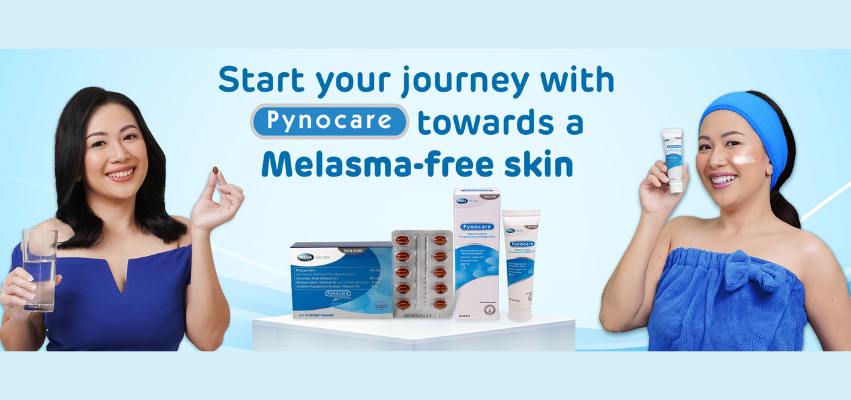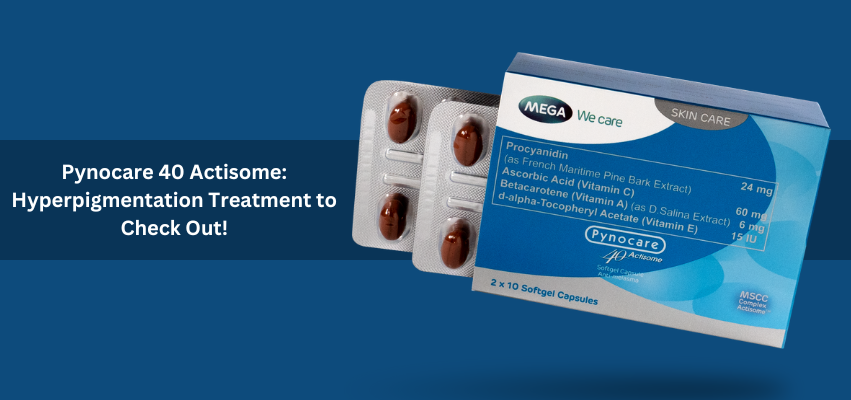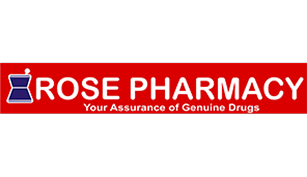Melasma, a prevalent dermatological condition characterized by hyperpigmented patches on the skin, particularly affects the facial region and poses significant aesthetic and psychological concerns for those who have it. The quest for effective treatments has led to the exploration of various depigmenting agents, among which kojic acid has garnered substantial attention. Recently, oral treatment options such as Pynocare have emerged, offering a different approach to managing melasma. Pynocare is an oral supplement containing a blend of antioxidants, including procyanidin, vitamins A, C, and E, designed to reduce oxidative stress and inflammation that contribute to hyperpigmentation. But how do these two compare? In this article we will compare kojic vs Pynocare and have a comprehensive look into their mechanisms of action, clinical efficacy, safety profiles, and patient outcomes.
What is Kojic Acid?
Kojic acid is a natural metabolite produced by various fungi, mainly Aspergillus oryzae. It has gained significant attention in the field of dermatology for its skin-lightening properties. It is widely used to treat hyperpigmentation disorders such as melasma, age spots, and post-inflammatory hyperpigmentation.
Kojic acid gained popularity in the Philippines in the early 2000s. Its rise can be attributed to the increasing demand for skin-lightening products in the country, driven by cultural beauty standards that favor lighter skin tones. A 2011 paper conducted in 2005 surveyed 117 Filipino dermatologists and found that 29.8% of them recommended kojic acid as maintenance therapy for their melasma patients.
The introduction of kojic acid soaps and creams in the local market quickly captured the attention of consumers seeking effective solutions for hyperpigmentation, melasma, and overall skin lightening. Today, kojic acid remains a staple ingredient in many skincare products in the Philippines, continuing to enjoy popularity for its skin-lightening and anti-pigmentation properties.
What is Pynocare?
Pynocare is an oral medication specifically formulated to address melasma. Unlike topical treatments that target the skin directly, Pynocare works from within the body to reduce pigmentation and improve overall skin health. This medication combines a blend of natural antioxidants designed to mitigate the factors contributing to melasma.
It is the first FDA-approved over the counter (OTC) medication for melasma available in the Philippines. It is backed by clinical studies with one of the clinical trials being actually conducted in the Philippines.
Kojic vs Pynocare
Kojic acid, known for its tyrosinase-inhibiting properties, and Pynocare, a potent oral medication, offer different mechanisms for addressing hyperpigmentation caused by melasma. Below we will compare kojic vs Pynocare more in depth.
Kojic Acid – Mechanism of Action
Kojic acid functions primarily by inhibiting tyrosinase, an enzyme critical to melanin synthesis. This mechanism makes it a promising candidate for reducing hyperpigmentation and achieving a more even skin tone. To better understand how kojic acid helps with melasma, let’s take a look at the role of tyrosinase in pigmentation.
Tyrosinase is a copper-containing enzyme that plays a pivotal role in the biosynthesis of melanin. The melanin synthesis pathway involves several steps:
- Hydroxylation of Tyrosine: Tyrosinase catalyzes the hydroxylation of the amino acid tyrosine to form L-DOPA (L-3,4-dihydroxyphenylalanine).
- Oxidation of L-DOPA: Subsequently, tyrosinase oxidizes L-DOPA to dopaquinone.
- Polymerization: Dopaquinone undergoes a series of non-enzymatic reactions leading to the formation of melanin.
Kojic acid exerts its skin-lightening effect by inhibiting tyrosinase activity, thereby disrupting the melanogenesis pathway. The detailed mechanism includes:
- Chelation of Copper Ions: Tyrosinase requires copper ions (Cu2+) at its active site to function effectively. Kojic acid chelates or binds with these copper ions, rendering the enzyme inactive. This inhibition prevents the conversion of tyrosine to L-DOPA and subsequently L-DOPA to dopaquinone, halting melanin synthesis.
- Competitive Inhibition: Kojic acid competes with the substrate (tyrosine) for binding to the active site of tyrosinase. By occupying the active site, kojic acid prevents tyrosine from accessing it, thus inhibiting the enzyme’s catalytic activity.
- Additional Mechanisms
- Reactive Oxygen Species (ROS) Scavenging: Kojic acid also exhibits antioxidant properties, which contribute to its depigmenting effects. By scavenging reactive oxygen species (ROS), kojic acid reduces oxidative stress within melanocytes. This reduction in oxidative stress can lead to decreased melanin synthesis.
- Inhibition of Melanosome Transfer: Melanosomes are organelles within melanocytes that synthesize and store melanin. Kojic acid may interfere with the transfer of melanosomes from melanocytes to keratinocytes or skin cells, thereby reducing the overall pigmentation of the skin.
- Anti-inflammatory Effects: Inflammation can stimulate melanogenesis, leading to post-inflammatory hyperpigmentation. Kojic acid’s anti-inflammatory properties help mitigate this effect, further contributing to its skin-lightening capabilities.
Pynocare – Mechanism of Action
The exact mechanism by which procyanidins affect melasma remains unclear, but several pathways are proposed:
- Antioxidant Activity: Procyanidins scavenge free radicals, reducing oxidative stress, a known contributor to melasma.
- Anti-inflammatory Effects: Procyanidins inhibit inflammatory mediators, reducing inflammation that exacerbates melasma.
- Inhibition of Melanogenesis: Procyanidins inhibit tyrosinase activity, interfering with melanin production.
Clinical Evidence – Kojic Acid
Now that we know how kojic acid works for melasma, let us take a look at the scientific evidence backing it.
- Clinical Studies
Kojic acid vs Hydroquinone: Monteiro et al. (2013) conducted a comparative study evaluating the efficacy of 0.75% kojic acid cream vs hydroquinone 4% in treating melasma. The results of the study show that hydroquinone cream is a better topical hypopigmentation agent with rapid rate of clinical improvement when compared to 0.75% kojic acid cream.
Kojic acid vs Methimazole: Yenny (2018) compared 4% kojic acid cream with 5% Methimazole cream and found methimazole to be superior in terms of decrease in MASI score and reduction in amount of melasma.
Kojic acid + Hydroquinone and Glycolic acid: This study by Lim (1999) compared the effect of adding kojic acid to a formulation of 2% hydroquinone and 10% glycolic acid. The study found that melasma reduced to more than half in 60% of those who received the formulation with kojic acid vs only 47.5% in those who received the formulation alone.
Combination formulations: Deo et al., (2013) compared the efficacy of kojic acid 1% alone, vis-a-vis its separate combinations with 2% hydroquinone or 0.1% betamethasone valerate and a combination of all these three agents with respect to the duration of symptoms and level of pigmentation in the therapy of melasma. They found that a combination of kojic acid 1% and hydroquinone 2% cream had the highest clinical efficacy among the combinations.
- Tolerability and Safety Profile
Kojic acid is generally well-tolerated, with minimal side effects such as mild irritation and redness. However, some studies have reported cases of contact dermatitis and increased photosensitivity, necessitating the use of sunscreen during treatment. While short-term use appears safe, the long-term effects of kojic acid are not well-documented. Continuous monitoring and consultation with a dermatologist are recommended for extended use.
Clinical Evidence – Pynocare
Several clinical studies have investigated the efficacy of procyanidin in treating melasma:
- Yamakoshi et al. (2004): The study involved 12 Japanese women with melasma who were given 67 mg of procyanidin-rich grape seed extract daily for 6 months. The melasma area and severity index (MASI) scores showed significant improvement, indicating that procyanidin can effectively reduce hyperpigmentation.
- Shoji et al. (2005): This study tested procyanidin trimers derived from apples on B16 mouse melanoma cells. The inhibitory effect of apple-derived procyanidin on melanogenesis was stronger than that of arbutin or kojic acid. The procyanidin trimer-to-pentamer fractions had the most pronounced effect on melanogenesis, suggesting that procyanidins are effective tyrosinase inhibitors.
- Handog et al. (2009): A double-blind, placebo-controlled trial involving 60 Filipino women with epidermal melasma. Participants received either oral procyanidin plus Vitamins A, C, and E, or a placebo, twice daily with meals for 8 weeks. Results were evaluated using a mexameter, MASI scores, and global evaluation by the patient. The procyanidin group showed significant improvement in pigmentation with minimal adverse effects, providing strong evidence for the efficacy of procyanidin in treating melasma.
Kojic vs Pynocare: Final Verdict
The clinical evidence supports the efficacy of kojic acid in treating melasma, particularly when used in combination with other depigmenting agents. Similarly, clinical evidence for Pynocare shows its efficacy in treating melasma. Although there is no study directly comparing kojic vs Pynocare – and it will be difficult to do so since their route of administration differs. We can glean however from the other studies evaluating them and comparing them with other topical or oral treatment options.
Although kojic acid is generally well-tolerated, potential side effects such as skin irritation and photosensitivity warrant caution. Similarly, Pynocare is well-tolerated and causes minimal adverse effects during clinical studies – with moderate stomach upset being the most reported adverse event.
While both kojic and Pynocare can be used alongside each other, it is crucial to emphasize that the management of melasma should be personalized and overseen by a dermatologist. A dermatologist can provide a comprehensive evaluation, consider individual skin types and conditions, and recommend a tailored treatment regimen that maximizes efficacy while minimizing potential side effects. Professional guidance ensures that the chosen treatment aligns with the patient’s specific needs, leading to better and safer outcomes.
Disclaimer: This article is intended for informational purposes only and should not be used as a substitute for professional medical advice, diagnosis, or treatment. Always seek the advice of your physician or other qualified healthcare provider with any questions you may have regarding a medical condition. Never disregard professional medical advice or delay in seeking it because of something you have read in this article. The efficacy and safety of procyanidin as a treatment for melasma should be discussed with a healthcare professional, and individual results may vary.
References
Deo, K. S., Dash, K. N., Sharma, Y. K., Virmani, N. C., & Oberai, C. (2013). Kojic Acid vis-a-vis its Combinations with Hydroquinone and Betamethasone Valerate in Melasma: A Randomized, Single Blind, Comparative Study of Efficacy and Safety. Indian Journal of Dermatology, 58(4), 281–285. https://doi.org/10.4103/0019-5154.113940
Fernandez-Arandia, C.P., & Abad-Casintahan, M.F. (2011). A descriptive study on the treatment strategies for melasma used in the Philippines. Journal of the Philippine Dermatological Society, 20(2), 42-49.
Handog, E. B., Galang, D. A., de Leon-Godinez, M. A., & Chan, G. P. (2009). A randomized, double-blind, placebo-controlled trial of oral procyanidin with vitamins A, C, E for melasma among Filipino women. International Journal of Dermatology, 48(8), 896–901. https://doi.org/10.1111/j.1365-4632.2009.04130.x
Lim J. T. (1999). Treatment of melasma using kojic acid in a gel containing hydroquinone and glycolic acid. Dermatologic Surgery, 25(4), 282–284. https://doi.org/10.1046/j.1524-4725.1999.08236.x
Monteiro, R. C., Kishore, B. N., Bhat, R. M., Sukumar, D., Martis, J., & Ganesh, H. K. (2013). A Comparative Study of the Efficacy of 4% Hydroquinone vs 0.75% Kojic Acid Cream in the Treatment of Facial Melasma. Indian Journal of Dermatology, 58(2), 157. https://doi.org/10.4103/0019-5154.108070
Shoji, T., Masumoto, S., Moriichi, N., Kobori, M., Kanda, T., Shinmoto, H., & Tsushida, T. (2005). Procyanidin Trimers to Pentamers Fractionated from Apple Inhibit Melanogenesis in B16 Mouse Melanoma Cells. Journal of Agricultural and Food Chemistry, 53(15), 6105–6111. https://doi.org/10.1021/jf050418m
Yamakoshi, J., Sano, A., Tokutake, S., Saito, M., Kikuchi, M., Kubota, Y., Kawachi, Y., & Otsuka, F. (2004). Oral intake of proanthocyanidin-rich extract from grape seeds improves chloasma. Phytotherapy Research, 18(11), 895–899. https://doi.org/10.1002/ptr.1537
Yenny, S. W. (2018). Comparison of the Use of 5% Methimazole Cream with 4% Kojic Acid in Melasma Treatment. Turkish Journal of Dermatology, 12(4), 167–171. https://doi.org/10.4274/tdd.3640
PYNOCARE (Procyanidin + Ascorbic Acid + Betacarotene + d-Alpha-Tocopheryl Acetate)
The first and only oral medicine that is clinically proven to reduce Melasma or dark spots formation in just 8 weeks. Unlike creams, lotions, and gels, it has MSCC or Melasma Skin Clear Complexion Complex formulation that deeply penetrates the inner layers of the skin, to help normalize melanin levels, thus minimizing the appearance of dark spots in a short time.
Mega Lifesciences Limited Inc. or Mega We Care, is actively involved in helping millions of people have access to safe, effective, world-class quality nutritional & herbal supplements, OTC, and ethical products.



















No Comments on Can Kojic Acid Treat Melasma?